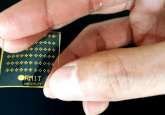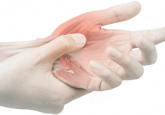Neuroprosthetic exoskeleton allows tetraplegic patient to utilize his limbs

Wireless brain–machine interface technology has been utilized to design an exoskeleton for helping a tetraplegic patient move his limbs. A team from the University of Grenoble (France) have designed a four-limb neuroprosthetic exoskeleton, which can be controlled utilizing brain–machine interfacing technology. Their proof-of-concept study, which has allowed a tetraplegic patient to use his limbs, has been published in The Lancet Neurology. The patient involved in the study was a 28-year-old male who had tetraplegia as a result of spinal cord injury. Two wireless epidural recorders were implanted over the sensorimotor cortex of the patient’s brain to monitor his brain activity....





